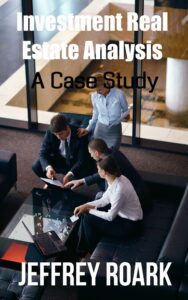Commercial real estate markets face significant stress as property values drop and refinancing options shrink. When properties are underwater, more borrowers decide to walk away from their loans even if they can still make payments. A CRE strategic default happens when a borrower chooses to stop making mortgage payments on a commercial property, not because they can’t pay, but because the property’s value has dropped far below what they owe.
This calculated choice marks a shift in how commercial real estate professionals handle distressed assets. Unlike traditional defaults caused by cash flow problems, strategic defaults involve borrowers who can pay but decide that keeping up with payments no longer makes sense. Strategic defaults in commercial real estate have become more common as borrowers compare the costs of continued payments to potential losses.
It’s important for both investors and lenders to know the mechanics, risks, and implications of strategic defaults in today’s challenging market. The decision brings legal, financial, and reputational issues that go well beyond simply stopping payments. If you’re reviewing your portfolio or assessing risk, knowing these factors can help you make better decisions in a volatile commercial real estate market.
Key Takeaways
- Strategic default is a deliberate choice to stop payments despite having the means, usually when property values fall far below loan balances
- Borrowers must weigh the possible benefits against serious consequences like credit damage, legal issues, and limits on future financing
- Market conditions and loan structures play a big role in how likely strategic defaults are and how they affect everyone involved
CRE Strategic Default Fundamentals
Strategic default in commercial real estate is a business decision where borrowers stop payments even though they have the means to continue. This is different from distressed defaults and usually happens when the property’s value drops well below the loan balance.
Definition and Key Characteristics
Strategic default happens when a borrower intentionally stops making payments on a debt even though they can pay. In commercial real estate, this means walking away from a property when making payments no longer makes sense financially.
The main characteristic is having the financial ability but choosing to default for economic reasons. You can pay, but the property’s value makes it a poor investment.
Unlike involuntary defaults, strategic defaults involve careful calculation. You compare the cost of continued payments with the benefit of letting go of the asset.
Primary characteristics include:
- Borrower has enough liquidity
- Property value is much lower than the loan balance
- Negative cash flow projections
- Little chance for the property to recover value
- Economic considerations of default consequences influence the decision
How Strategic Defaults Differ from Other CRE Loan Defaults
Strategic defaults differ from distressed defaults in motivation and borrower capacity. Distressed defaults happen when you can’t make payments due to lack of cash flow or financial hardship.
Key differences:
| Strategic Default | Distressed Default |
|---|---|
| Voluntary decision | Involuntary circumstance |
| Financial capacity exists | Cash flow insufficient |
| Economic calculation | Financial necessity |
| Timing controlled | Crisis-driven |
Economic reasons motivate strategic default rather than an inability to pay. You keep negotiating power because you’re making a business choice, not reacting to financial collapse.
Strategic defaults can involve multiple loans where you keep paying on some properties but default on others that are underwater. This selective approach shows the calculated nature of these decisions.
Triggers and Common Scenarios Leading to Strategic Default
Several market and property-specific factors can trigger strategic default in commercial real estate. Property value decline is the biggest factor, especially when values fall 30-40% below loan balances.
Common triggers include:
- Major drop in property value
- Negative cash flow with no chance of recovery
- Too much supply in certain markets
- Rising interest rates making refinancing harder
- Loss of key tenants or lease expirations
Typical scenarios include:
Office buildings lose tenants and value as remote work becomes common. Retail properties struggle with online competition and shifting consumer habits.
Properties bought at the market’s peak with high leverage are especially at risk. When CRE loan defaults hit decade highs, strategic defaults rise as borrowers rethink investments that are underwater.
Location matters too. Properties in struggling markets with few options to diversify face higher risk of strategic default when local economies weaken for the long term.
Market Factors and Implications of CRE Strategic Defaults
Economic downturns, higher interest rates, and new work patterns make strategic defaults a logical choice for some borrowers. These forces affect property values, loan performance, and the larger financial system through connected CRE investments.
Impact of Economic Downturns and Interest Rate Changes
Economic downturns lower property values and rental income while making refinancing harder. When your property’s value drops below your loan balance, you end up with negative equity and may see strategic default as a better option.
The federal funds rate affects borrowing costs and refinancing options. Higher rates increase payments on variable-rate loans and make new loans more expensive. CRE loan defaults have reached their highest rate since 2014, putting more pressure on borrowers.
Interest rate changes impact property types differently:
- Office buildings: Higher rates worsen vacancy challenges
- Retail properties: Lower consumer spending during downturns
- Industrial assets: Usually more stable during rate changes
Strategic default looks more appealing when the cost of refinancing is higher than the property’s cash flow. As rates rise and values fall, this calculation becomes more common.
Role of Market Dynamics and Hybrid Work Trends
Hybrid work has changed office demand, creating ongoing challenges. Many markets now see office space needs drop by 20-30% because of remote work, making these buildings harder to lease and less valuable. The COVID-19 pandemic sped up changes in how businesses use commercial spaces, leading to lasting shifts in space use.
Market changes that influence strategic defaults include:
- Vacancy rates above normal levels
- Falling rental rates and more tenant concessions
- Lower property sales prices
- Less buyer interest in certain sectors
These conditions make it tough to generate enough cash flow to cover debt. When it looks like the market will stay weak, some borrowers choose strategic default to preserve their capital for other opportunities.
CRE CLOs, Mortgages, and Broader Financial Effects
CRE CLOs bundle commercial mortgages into securities, spreading risk among investors. When you default strategically, the effects reach beyond your lender to CLO investors and the wider financial system.
Strategic default and bankruptcy cases in the CRE market have increased, especially in retail and hospitality. This trend affects CLO performance and investor returns.
As mortgages approach maturity, borrowers face refinancing challenges that can lead to more strategic defaults. With $950 billion in commercial mortgages coming due in the next year, these issues are widespread.
The broader financial effects include:
- Bank balance sheets: More non-performing loans
- Insurance companies: Lower returns on CRE investments
- Pension funds: Weaker CLO performance affects retirement assets
- Credit markets: Stricter lending standards for future borrowers
Your decision to default strategically adds to systemic risk, especially when many borrowers in similar situations make the same choice.
Frequently Asked Questions
What factors influence a company’s decision to strategically default on commercial real estate loans?
The main factor is how much the property value has dropped compared to the loan balance. If a property is deeply underwater, continuing payments may not make sense, especially if other investments look better. Companies also consider cash flow, future income, interest rates, and refinancing options before deciding to default, and may choose to redirect funds from struggling properties to more promising areas.
How does strategic default impact the commercial mortgage-backed securities (CMBS) market?
Strategic defaults put immediate stress on CMBS performance by raising delinquency rates and triggering special servicing procedures. When you default, you add to market concerns about CRE CLO distress rates, which climbed from 1.4% to 8.6% in recent periods.
CMBS investors receive less cash flow and may face principal losses when strategic defaults happen. Lower-rated tranches take losses first, but if defaults become widespread, even higher-rated securities can suffer and investor confidence can drop.
The secondary market for CMBS often sees price swings and less liquidity as strategic defaults increase. Your default can help drive market repricing of commercial real estate credit risk.
Rating agencies may downgrade CMBS securities after clusters of strategic defaults. This adds market pressure and can limit institutional investors’ ability to keep these securities.
How might large volumes of CRE loan maturities affect the occurrence of strategic defaults?
When your loan matures during times of tight credit or higher interest rates, refinancing can become much harder. Properties that worked under old loan terms may no longer make sense financially with new terms.
A wave of loan maturities puts pressure on the entire commercial real estate market. When many borrowers face refinancing challenges at once, strategic defaults often rise together.
Your property’s loan-to-value ratio at maturity plays a big role in whether you can refinance. If you need to add a lot of new capital to meet lending standards, you may choose to default instead of investing more equity.
When banks face stress from concentrated CRE exposures, they often pull back on lending just when you need to refinance. This credit crunch can push strategic default rates even higher during maturity waves.
What are the potential consequences for the commercial real estate market if there is a rise in strategic defaults?
As strategic defaults increase, property values can drop because more foreclosures and distressed sales add supply to the market. Even if your own property isn’t in distress, its value may fall due to lower prices on similar sales.
Lenders often tighten credit in response to more defaults by raising down payment requirements, lowering loan-to-value ratios, and increasing interest rate spreads. You may find it harder to get favorable loan terms.
Commercial real estate investment activity tends to slow when uncertainty grows around property values and financing. This can deepen market corrections and make it tougher for you to exit investments.
Some regions feel the impact more when large-scale defaults affect local commercial real estate. Markets with high office vacancies or retail struggles can see even greater effects.
Are you looking to connect with property owners, landlords, and real estate investors?
Ready to grow your business by connecting with property professionals?

Dive deep into the world of real estate investment with this comprehensive case study that brings theory to life.
Investment Real Estate Analysis: A Case Study offers an unparalleled look at the decision-making process behind successful property investments. Follow along as we dissect a real-world scenario, revealing the critical factors that seasoned investors consider before making a move.
From crunching numbers to assessing market conditions, this book walks you through every step of the analysis process. Learn how to evaluate potential investments like a pro, understanding key metrics such as cap rates, cash-on-cash returns, and internal rate of return.
Whether you’re a novice investor or looking to refine your skills, this case study will equip you with the tools to make informed investment decisions in the competitive real estate market.
Get your copy now from your favorite bookseller:
- Amazon
- Books2Read for Apple, Barnes & Noble, Kobo, Scribed, and 8 more sellers with both eBook and paperback options available
- Payhip as a downloadable PDF
Ready to take your business to the next level?
- Subscribe to our newsletter
- Visit the learning center
- Learn more about our consulting services



